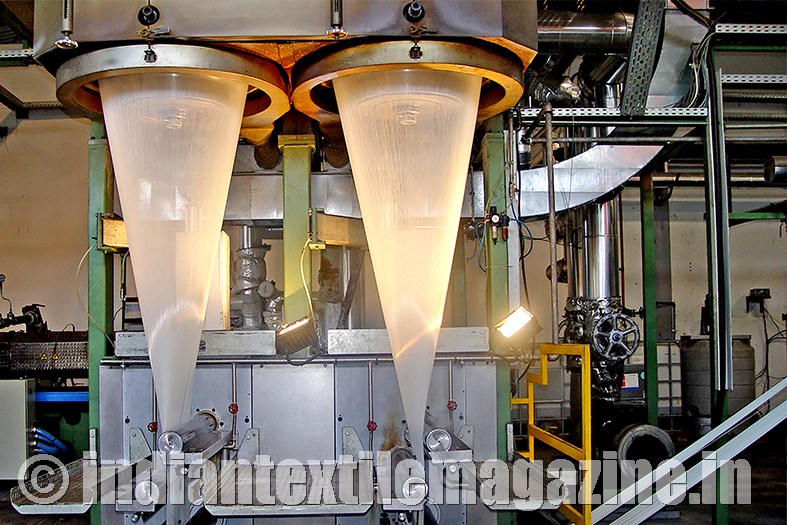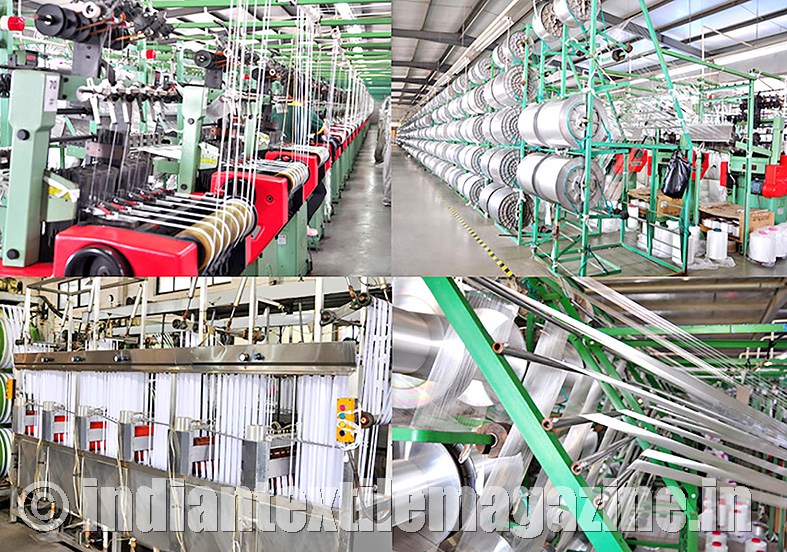Polyester fibre has now become the fibre of choice within the textile industry owing to its price, physical properties and versatility. Today the polyester fibre market accounts for about half of the total global fibre market. In 2016, demand for polyester fibre was dominated by polyester yarn, which accounted for 68% of overall consumption.
The increase in the world fibre consumption was by 1.5% up to 99 million tons in 2016. Oil-based synthetic fibres had the biggest share with 62.7%. Cellulosic and protein-based fibre constitute the balance 37.3%, break-up of this balance being cotton (24.3%), wood-based cellulose fibres (6.6%), and other natural fibre (5.3%) and wool (1.1%).
Polyester has overtaken cotton as the dominant fibre, but the cost and availability still does play a significant role in the inter-fibre substitution. Crude oil price and cotton prices will affect the demand for respective fibre in the world. Increase in demand for apparels, home textiles and technical textiles was sustainable as the macro-economic scenario has recovered. Home furnishings constitute the second largest end-use sector contributing about 25% of the volume produced globally.
Indian textile industry
The textile and apparel industry can be broadly divided into two segments – yarn & fibre and processed fabric, including garments and made-ups. India accounts for 14% of the world production of all textile fibres and yarn (the largest producer of jute and the second largest producer of silk and cotton). The major application of polyester fibre is production of fabric which is further used in apparel, home furnishing, technical textile, kids and women wear.
The main competitor to polyester continues to be cotton. A recent “CARE” rating reports 5% decline in India’s cotton yarn production for FY17 at 3,939 million kg as compared to 4,138 million kg FY16. Easy availability of man-made fibre at competitive rates has led to slower growth of cotton yarn production. Polyester now has become the yarn for the masses.
The textile industry, by its very nature, is labour intensive. Currently, Indian labour costs are around one-third of that of Chinese labour. This has resulted in Indian products being price competitive in the international market. Exports of texturizing yarn have grown significantly, and as a consequence the demand and prices in the domestic market have also become firm. India now is in a strong position to capture a greater share in the yarn market.
The Government has now taken some initiatives in order to compete aggressively, by ensuring availability of key raw materials, uninterrupted and stable power supply at competitive rates and availability of low-cost funds for operation. Besides, in order to boost higher investment for new capacities and modernization, the Government has also announced initiatives like introducing a mega package for powerloom sector, encouraging ‘India Handloom’, revised and restructured Technology Upgradation Fund Scheme (TUFS), etc.
India has been able to capture some share in PFY export markets in the past five years, especially in Brazil and Turkey, which also accounted for 41% of global trade in textured polyester yarn. India ate into Indonesian and Chinese share of PFY exports to these destinations, as a 25% depreciation in the rupee between 2010 and 2015 rendered its exports cheaper.
Long-term outlook
CRISIL Research expects total PFY demand to record 7-8% CAGR during FY16 to FY21 (vis-à-vis 7% CAGR in the past five years), driven by exports. Exports of textured yarn shot up to 16% CAGR in the past five years on account of low base and favourable exchange rates. In the long term, it is expected that textured yarn exports could continue to grow steadily, substituting direct POY exports. On the other hand, domestic demand is expected to post 6-7% CAGR.
Moreover, demand from new applications such as sportswear, underwear and bedding will enhance growth. Cost and other advantages could also help PFY substitute cotton and other fibres as has been the trend globally.
Growth drivers
Rapid urbanization: According to projections, an estimated 140 million Indians could move to cities by 2020 and 700 million by 2050. Besides, the number of cities with population above one million could nearly double with an increase in the number of mega-cities (above five million) to 10 by 2021 and 36 by 2051. Urbanization is expected to result in growing demand for fashionable products, durable garments and fabrics that meet aesthetic requirements.
Changing aspirations: Increase in income levels, shift in employment patterns, exposure to global trends and increase in discretionary spending resulted in changing consumer aspirations. With increasing incomes and nuclear families, discretionary spending has risen, catalysing the demand for home furnishings, fashionable garments and sportswear.
Emerging workforce: India has the second largest workforce in the world with 860 million 15-64 year olds, which constitutes approximately 66% of the total population. More than 50% of the population comprises the youth, either working or in academics. Polyester is increasingly used in formal wear, strengthening consumption.
Polyester filament yarns are extensively used in apparels like trousers, shirts, suitings and sarees. PFY is a strong filament that can withstand strong and repetitive movements. Colour fastness of polyester fiber is excellent. Its wear, water, wrinkle resistance and hydrophobic properties make it ideal for all kinds of apparels.
Fully drawn yarn of polyester is being used for home furnishings, fashion fabrics, terry towels, bed sheets, curtains & carpets. The other growing applications are upholstery fabrics. Stain resistance makes it ideal for carpets. The preferred material for sportswear is polyester yarn. Sports leisure clothing requires fabric that’s not only strong and durable but also abrasion resistant. Ease of washing and corrosion resistance makes it easy to maintain with longer life.
Women wear & innerwear
In these garments, seam softness is critical. The Textured Micro Denier has met the expected requirements and is being used in lingerie, performance garments, active and yoga wear. Low shrinkage to ensure no seam distortion after washing and soft feel makes these yarns an ideal choice. As filament yarns are available in micro fine denier to fine denier, these find application in kids and fashion wear, tapes, socks, zipper, etc.
Affordability: Polyester is wrinkle-free material with wide use in formal wear within the apparel industry. The fibre does not shrink and is often blended with other fibres to make it water-resistant. Polyester does not lose lustre over time.
Increasing per capita income: India’s per capita disposable income increased from Rs. 73,476 in fiscal 2012 to Rs. 107,817 in FY 2016 (base year fiscal 2012, at current prices, inclusive of other current transfers (net) from rest of the world). Increasing disposable income increased demand for value-added products. The demand for premium apparel is likely to increase, adding to the ‘look good’ factor, catalysing polyester demand.

